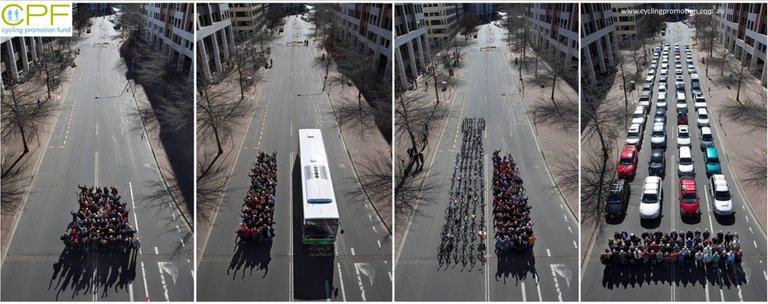This is the first post of a series of posts on movement. Movement of people in and around cities. As someone who lived in the Netherlands all my life, I grew up with a bicycle. Cycling to Dutch people is not (just) a sport or leisure activity. It is a transportation device used daily simply to get from A to B. In this series of posts, I want to discuss the meaning and importance of bicycles in everyday life and how they can be the solution to many problems we face in big cities today.
The Vicious Circle of Solving Congestion With More Roads
Most of us living in a big city know the struggle of rush hour and traffic jams. Getting ready for your daily commute, get in the car, standing in traffic surrounded by fellow, slightly aggravated commuters. Then after arriving too late at the office's parking facility, fighting to get a parking spot. And then repeat the whole process in reverse, at the end of a stressful workday, standing in traffic and driving around your neighborhood finding a place to park your car.
The solution? To many, the solution is simply more roads and more parking facilities. A solution that seems like the modus operandi for many city planners and politicians when looking at the state of many cities worldwide today.
The result of this approach? Fewer traffic jams and easier parking? Well, for a while, it is. What really happens is more people will use their car for commuting, as it is simply more efficient again. Until before you know it, we are back at square one. The same demand for more roads and parking facilities. This time with more tarmac and less space for people to actually live in the city.
This car-oriented approach to transportation really affects life in a city, for one, the space that is taken up by the many cars, often with just a single person inside. Moving from a car-oriented infrastructure to the more human-scale transportation of walking, cycling, or public transportation for longer distances can really transform a city.
Reducing the required space for the same amount of movement allows for cities to become nicer environments. Less car traffic yields quiet cities with improved air quality, traffic safety, and more space for green areas. A city that allows for living, not for transportation.
The picture below shows it all. It shows you the space needed for different modes of transportation. From left to right, you see 69 people traveling by foot, bus, bicycle, or car. The point is pretty obvious here. Using cars in cities is simply the least space-efficient. This doesn't change when using an electric car or a smaller car. They remain the most inefficient use of road space.

Image source: Velo Afficionado
With all the troubles we are currently facing as a society, reevaluating how we look at transportation and city design would be a good thing. Technological advancements like the electric car aren't always the best, most efficient, or easiest solution to a problem. Sometimes primitive technology such as the bicycle can go a long way. How is the situation in your city? Is it doable to use the bicycle to get around town, or would you be putting your life at risk when doing this?